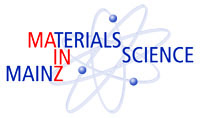


Physikalisches Kolloquium
Feb. 10, 2015 at
4 p.m. c.t.
in
Hörsaal des Instituts für Kernphysik, Becherweg 45
Prof. Dr. Alfons Weber
Institut für Physik
a.weber@uni-mainz.de
Prof. Dr. Hartmut Wittig
Institut für Kernphysik
hartmut.wittig@uni-mainz.de
The dark side of the universe
Prof. Dr. Katherine Freese (AlbaNova Univers. Center, Nordita, Stockholm, Schweden)
"What is the Universe made of?" This questions is the longest outstanding problem in all of modern physics, and it is the most important research topic in cosmology and particle physics today. The reason for the excitement is clear: the bulk of the mass in the Universe consists of a new kind of dark matter particle, and most of us believe its discovery is imminent. I’ll start by discussing the evidence for the existence of dark matter in galaxies, and then show how it fits into a big picture of the Universe containing 5 % atoms, 25 % dark matter, and 70 % dark energy. Probably the best dark matter candidates are WIMPs (Weakly Interacting Massive Particles). There are three approaches to experimental searches for the WIMPs: at the Large Hadron Collider at CERN in Geneva; in the underground laboratory experiments; and with astrophysical searches for dark matter annihilation products. Currently there are claimed detections in multiple experiments – but they cannot possibly all be right. Excitement is building but the answer is still unclear. At the end of the talk I’ll return to dark energy and its effect on the fate of the Universe.